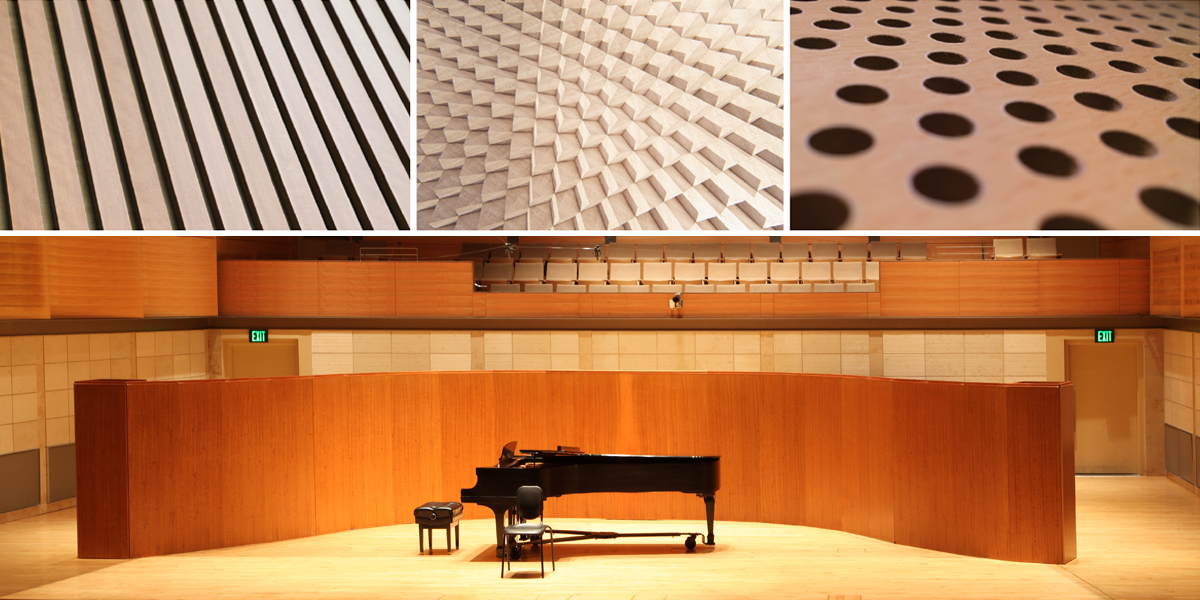Typical applications for the production of acoustic elements

The production of acoustic panels for optimum room acoustics is automated on CNC machines. These panel elements can vary greatly in appearance, usually with a perforated or grooved pattern or a combination. Perforated acoustic panels with perforations are structurally similar to those with multiple grooves, with the cavities created by pre-determined diameters of holes or slots.
For more efficient processing of these acoustic patterns in the machine center, the corresponding tools are clamped in CNC units. The specific pattern and the type of acoustic panel processing determine which aggregate is used.
Production of acoustic panels with grooves or slots
The DUO ULTRA LINE angular aggregate enables two tools to be clamped, allowing two grooves to be milled simultaneously to create multiple grooves.
For additional acoustic grooves, several saw blades can be clamped in the MEGA CUTTER ULTRA LINE planing shaft unit. The number and spacing of the saw blades are determined individually depending on the application and appearance of the acoustic panels.
Production of perforated patterns in acoustic panels
Hole patterns can be created in the acoustic elements by drilling holes in succession. The VERTI FUNCTION LINE multi-spindle aggregate enables multi-hole drilling in a single stroke, which saves time and enables individual hole patterns.
Cutting acoustic panels from soft materials
Acoustic panels made of soft materials can be cut efficiently with the SOFT CUTTER PRO FUNCTION LINE cutting aggregate.
CNC aggregates for the production of acoustic panels:
- Angular aggregate with two tool holders DUO ULTRA LINE
- Planing shaft aggregate for multiple sawing of acoustic slotted panels MEGA CUTTER ULTRA LINE
- Multi-hole drilling with individual drilling pattern with multi-spindle aggregate: VERTI FUNCTION LINE
- Cutting acoustic panels from soft materials SOFT CUTTER FUNCTION LINE
Processing the materials of acoustic panels:
The material of the acoustic panels significantly influences the choice of tools and the most suitable CNC unit for processing them. Acoustic panels can be made of a variety of materials such as solid wood, real wood veneer on MDF carrier boards, foams, felts, polyester fleece, plaster and others and can be processed with the appropriate acoustic aggregates.

